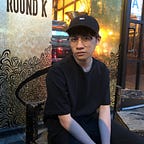Case study: Building a better platform to empower marginalized creatives
Abstract
When I was presented with the prompt to design for marginalized creatives, something inside me stirred. As a first generation Asian American artist trying to find an audience amongst all the other widely accepted mainstream art styles, I often feel so alone in my struggles to connect with people who are genuinely interested in my art and cultural background.
The product I decided to go with in the end is a content sharing platform that focuses on the artwork and artist’s culture and background, allowing users to deeply empathize with the artist and their work. To further differentiate the functionality of the platform from other content sharing apps such as Facebook and Instagram, I added innovative ways to capture the artworks such as 3D scanning and time-lapse recording for recording the work process.
I knew this was my chance to work on something that I care about deeply on a personal level. To create a solution for all the creatives out there that has felt the same isolation I’ve felt and built something that I would be proud off.
Research
I am aware from the start that working on a project so personal to myself would be dangerous due my own experiences and biases on the topic. Which made researching all the more crucial in confirming or dispelling any assumptions I had regarding the pain points.
The people
I talked to 11 people in total for insights into the struggles of their content sharing process. 7 out of the 11 were artists, 9 females and 2 males, age ranged from 23 to 33, with 10 people identifying as of Asian descent.
The things they told me
“It’s hard to show 3d objects in a picture, you can’t convey the depth and texture.” — Ceramic Artist
“using their own experiences, they translate that into their pieces and that how we learn about how others live.” —Graphic Designer
“My followers are kinda fake…and I feel so alone even with all these followers” — Instagram Fashion Blogger
The findings
From talking to the artists, there were some interesting insights that I never had any thoughts on before. I gathered up the main points and synthesized the information by affinity mapping.
From that I consolidated the information even more in a quantified format.
The Problem
From the newly gained insights, I can see three main problems with artists when sharing their works.
- Some artist are not able to fully showcase their work due to the nature of the medium, such as sculptures and other 3d art.
- Marginalized artists are afraid to express themselves in their own culture due to the fear public scrutiny.
- Art consumers have an interest in artworks from marginalized artist but do not have the means to easily access them.
Looking for the solution
Now that I know the direction I should head towards, the next step is to come up with some ideas that can lead to solutions.
I noticed that everyone I talked to uses Instagram, so I decided to take inspiration from that and made some early sketches and user flows of how the users would normally share their work.
From there I created some simple paper prototypes for user testing
The feedbacks I got
“Likes” are too shallow for any types of interactions with the audience
Verify the users to preserve a genuine user base
Differentiate from the other social sharing platforms such as Instagram
More prototyping
incorporating the feedbacks I got, I further developed the prototype and created a wireframe that is clickable. The main feature I added was a discovery function specifically for finding artists of different cultures and different types of art mediums. To satisfy the needs for 3D artists to share their work, I added a 3D scan function to give them the ability to share the finer details that wouldn’t be able to show on a 2D image.
Conclusion
The product I ended up with is a platform that is tailored for artists to share their niche without feeling the pressure of social scrutiny. With special functions that allow the sharing of less conventional art mediums, it is a major feature that differentiates from other social sharing apps in the market.
Moving forward I would like to explore more types of media mediums such as virtual reality and augmented reality to further encourage different type of art style on the platform. Building a non-traditional user base that embraces and celebrates the lesser known artists and art styles would also be another end goal. For now I will rest my case and thank you for reading.
